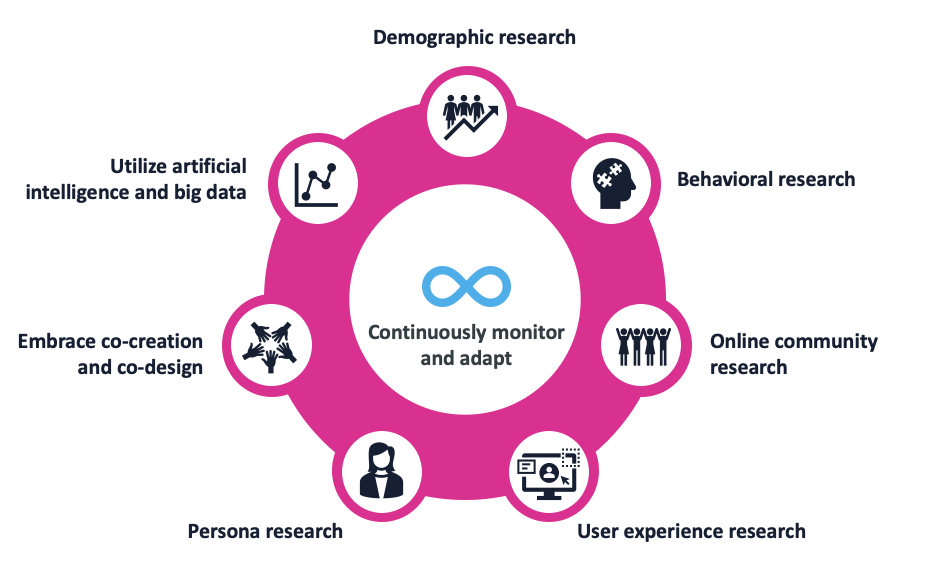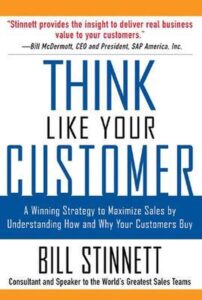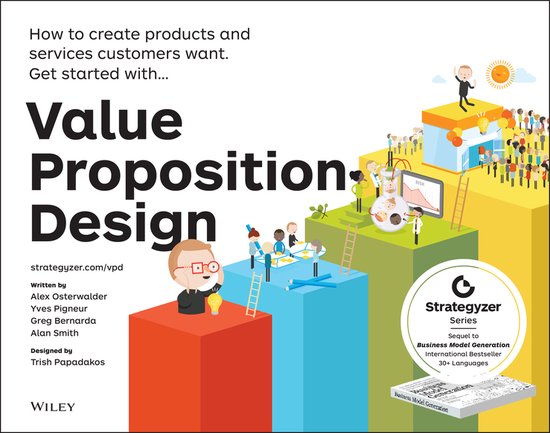How well do you know your clients? How often do you reconsider your understanding of your clients’ changing needs, pain points, and preferences?
In today’s dynamic and client-centric business landscape, understanding your clients crucial for achieving success. By understanding what frustrates and energizes clients, you can leverage these insights to enhance the quality of your products, effectively addressing their needs and solving their problems. Without a deep understanding of clients’ needs, and desires, and how you can genuinely serve them, your products will face an uphill battle. Building on our March blog post about how to Build a Robust Product Proposition and Strategy, in this article, we delve into the importance of understanding and connecting with your clients in a B2B context, exploring practical strategies for strengthening these vital relationships.
Gauge how well you already know your clients
The journey to understanding your clients begins with self-assessment. Ask yourself, how well do I currently understand my clients? What do I know about their needs and pain points? What about their preferences and buying or using behaviors? How do I understand their decision-making? What are their long-term goals and aspirations? How do I communicate with them? And so on… Reflect on these experiences and see what you already know and where the gaps lie. Talk to colleagues or team members who have direct client contact. Ask for their insights and findings based on their experience of client needs, wants, and pain points. Consider the most common questions, concerns, or requests clients have. The knowledge you have accumulated is your starting point; now it’s time to go further.
Harness the Power of Research
Research is a powerful tool that can offer you invaluable insights into who your clients are and how you can connect with them. Here are some different types of research you should be conducting:
Persona research
Persona research dives into qualitative aspects such as a client’s attitudes, values, interests, and lifestyle. This information helps you to build an extensive profile to better reach your client and improve your offering based on their needs. Look for patterns in your client data to understand the traits and behaviors that define your clients. Build detailed personas based on these common traits. This will help you visualize who your clients are, what they want, and how they make decisions (and whether they have decision-making authority). Use these personas when making decisions about product development, marketing strategies, and customer service.
Here’s a short guide to conducting persona research:
- Collect client data from surveys, interviews, and feedback.
- Identify common traits and behaviors among your clients.
- Group clients into segments based on similarities.
- Create detailed profiles for each segment, including demographics and preferences.
- Validate personas with client insights through interviews or surveys.
- Use personas to inform sales, marketing, or project decisions.
- Regularly update personas as client preferences evolve.
Experience research
Immerse yourself in your client’s shoes by observing their habits, routines, and interactions with your product or service in their natural environment. This real-time qualitative approach provides deeper insights into their experiences, pain points, and preferences.
Make sure to leverage feedback and reviews. Different types of client feedback and reviews are a goldmine of information that can help you understand your clients on a deeper level. Actively encourage clients to provide feedback through, for example, surveys or post-purchase emails. Pay attention to both positive and negative feedback, as they can highlight areas for improvement or reinforce what you’re doing well. Analyzing client sentiment and identifying common themes in feedback will allow you to make informed decisions about your product offerings and marketing messages.
Online community research
Monitor social media platforms to grasp how clients perceive your brand. By actively reviewing and reading client conversations and analyzing their opinions, you gain valuable insights into their satisfaction levels and identify opportunities for improvement or engagement.
But also, don’t be afraid to truly engage with online communities that are relevant to your industry or target clients. Participate in discussions, share valuable insights, and listen to what clients are saying. This will give you a unique perspective on their needs and preferences, helping you create a more authentic connection.
And if you don’t have an online community yet, create one!
Embrace Co-Creation and Co-Design
Involving your clients in the creation and design process can be an incredibly valuable and unique way to understand their needs and desires by validating your offering. By seeking input from your clients and incorporating their ideas, you make them active participants in shaping the final product or service. This approach deepens your understanding of client preferences and fosters a sense of ownership and loyalty among your clients. Consider conducting focus groups, beta testing, or even inviting customers to collaborate on product development through crowdsourcing platforms.
Utilize Artificial Intelligence and Big Data
Advancements in technology have given businesses access to vast amounts of data that can provide valuable client insights. Artificial Intelligence (AI) and Big Data analytics tools can help analyze client behavior patterns, preferences, and purchasing habits on a large scale. By leveraging these technologies, you can uncover hidden trends and correlations that may not be apparent through traditional research methods. For example, AI-powered algorithms can identify purchase patterns and recommend personalized product suggestions to individual clients, enhancing their experience and strengthening your relationship with them. Other examples include personalization, sentiment analyses, and predictive analytics.
Continuously monitor and adapt
Client expectations are always evolving. Stay up to date with the latest trends and be ready to adjust your strategies, as necessary. Combine external trends with direct client engagement to truly understand their evolving needs and expectations. A proactive approach to understanding your clients is key. And remember that assumptions can lead to costly mistakes. To truly differentiate your business, it’s important to not only understand your client but also create a client-centric culture within your organization. More on this topic in future blog posts.
Engage with your clients directly, ask questions, send out surveys, organize focus groups, and, most importantly, listen intently to what they have to say.

Understanding and connecting with your clients is a fundamental aspect of business success. By gauging your existing knowledge, harnessing the power of research, and continuously monitoring and adapting, you can forge deeper connections with your client and meet their ever-changing expectations. Remember, a client-centric approach is not a one-time effort but a continuous journey that requires active engagement, listening, and evolution. By investing in understanding your clients, you lay the foundation for sustainable growth and long-term success in today’s competitive landscape.
Feel free to reach out to us for further assistance, access to case studies, templates, or guidance on how to accomplish this. We are here to support you in your journey.
Curious to learn more? Check out our recommended reading list:
- Bill Stinnett: Think Like Your Customer: A Winning Strategy to Maximize Sales by Understanding and Influencing How and Why your Customers Buy
- Alex Osterwalder: Value Proposition Design How to Create Products and Services Customers Want
- Jack Mitchell: Hug Your Customers: The Proven Way to Personalize Sales and Achieve Astounding Results
- Harley Manning and Kerry Bodine: Outside In: The Power of Putting Customers at the Center of Your Business





Frédérique de Lange
Championing different opinions to think outside of the black-and-white and explore all colors.





